Rubble to rooftop bar: Pensacola Cultural Center is renovating & reinventing itself - again
When the deed to the old Escambia County jail and courthouse was handed over to the aspiring Pensacola Cultural Center in 1988 — its gallows still intact for public hangings — people questioned how such a monumental renovation would ever be completed.
The project would take at least $3 million in capital, a handful of bank loans, a massive overhaul of the 1911 neo-classical building and a brand-new cultural center board championing the mission.
“It was a shell,” Dave Clark, Pensacola Cultural Center board member, said of the building’s condition at the time. “It was such an enormous job, but we didn’t know it at the time.”
Mary Lou Cosby would give tours of the old jail house to potential donors “when it was in shambles.” Her husband at the time, prestigious Pensacola surgeon Brad Pyle, who was then president of the Pensacola Little Theatre Board, brought her along with him as he lobbied statewide for funding. Since there was not much to show for the space aside from loosely sketched renderings, they were selling a dream.
“People had to really have an imagination,” Cosby teased.
Nonetheless, the funding came flowing in over a six-year span, and the Pensacola Little Theatre’s opening show, "The Wizard of Oz," debuted in the sparkling new, 480-seat theater in February of 1996. The renovation was a huge success, leading to the center opening debt-free and tripling the building’s value.
Now, 27 years later, the cultural center’s Executive Director Sid Williams-Heath is working to perform an encore.
Williams-Heath, who has been stewarding the building since 2017, is leading a $3 million reimagination of the space to preserve the 1911 building’s historic structure while also driving the cultural center forward into the future.
“It (the first renovation) was similar to what we are doing now, just a quarter of a century later,” Clark said.
Williams is setting out to finish something those before him had started — creating a physical space that all members of the community have a place in — while modifying their vision to reflect the growth Pensacola has undergone in the past 30 years.
With about $2.4 million raised for the 2023 renovation so far, the cultural center is on track for a grand third act, supported by a cast of supporters who have seen all that's been accomplished so far, and have the imagination to see the possibilities for what's next.
“What’s the only thing more powerful than an imagination?” Williams-Heath asked. “A reimagination.”
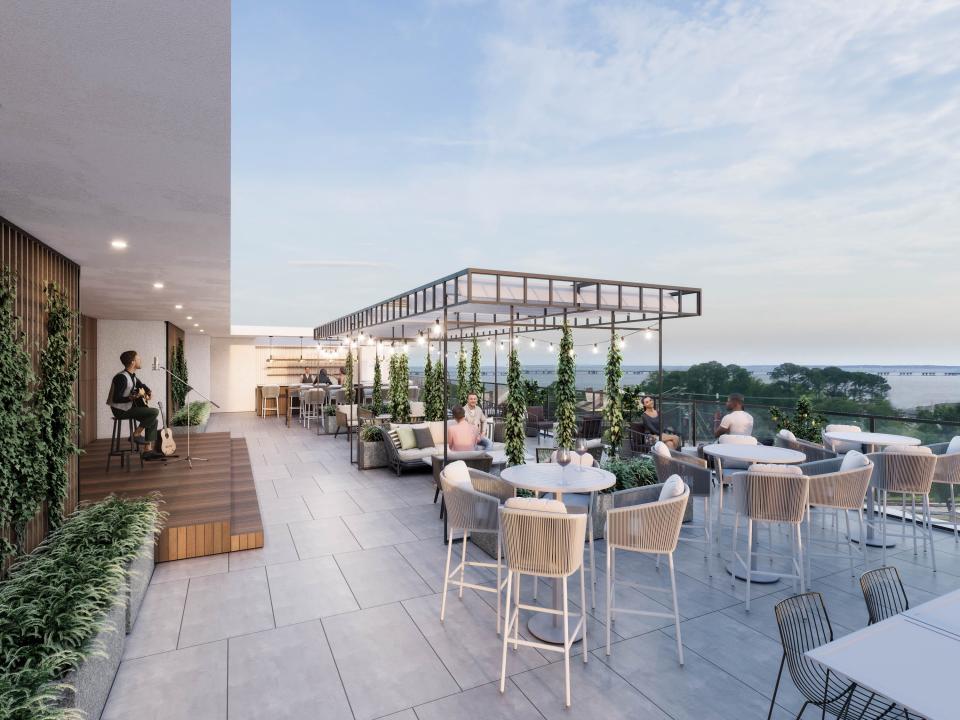
More on The Center's renovation:Showtime! Pensacola Little Theatre's future looks bright with new shows and upgraded home
PLT receives $1 million gift:Pensacola Little Theatre receives $1 million gift to renovate building, add rooftop lounge
Cultural Center upgrade adds new polish to community treasure
Because of those who laid the groundwork for the initial renovation and maintained the building in the years that followed, Williams-Heath has had the freedom to dream up what the space can become now that basic needs are met and the mortgage is paid.
For him, that is a public parlor with emerald green velvet curtains, stylistically mismatched leather armchairs and a signature cocktail bar. A fine art gallery that magnifies minority artwork, literally, with spotlight lighting. A renovated theater that appears to be taken straight out of a Ralph Lauren catalog with green plaid carpeting, wooden accents and creamy leather seats. An airy and elegant rooftop bar and performance area called The Top Tier with a waterfront view of Pensacola Bay.
The décor, now visualized in Williams-Heath’s captivating digital renderings, was merely wishful thinking a few years back.
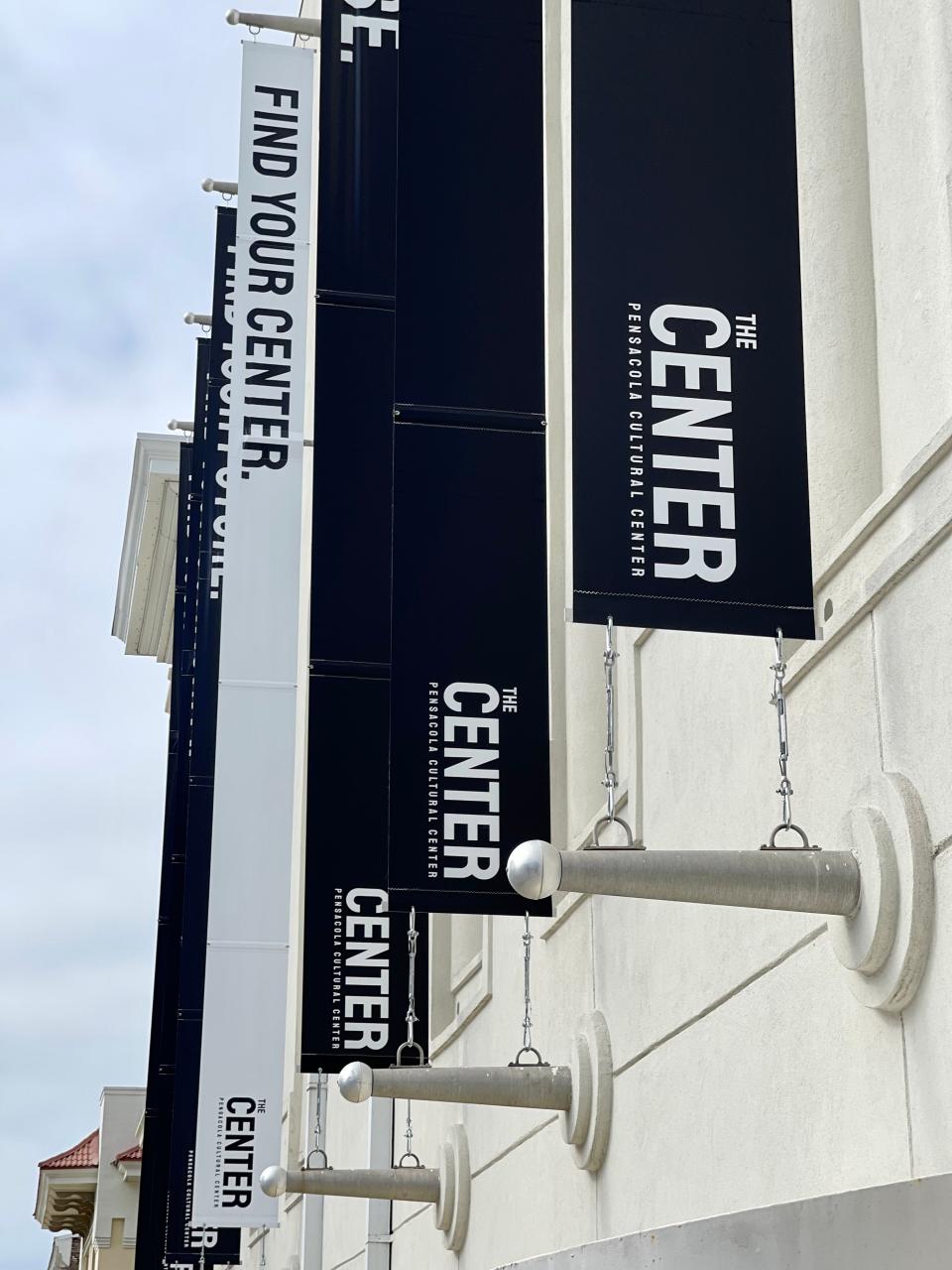
Initially, aesthetics took a back seat to practical maintenance repairs. A sexy rooftop bar requires a sturdy roof, after all. Not nearly as glamorous — but necessary. But without forfeiting his dream, Williams-Heath quietly put in years of work and fundraising, as his predecessors did, to get the building primed for its next chapter.
Clark was one of the few who watched the mission begin decades ago and now has taken part of the responsibility of funding the effort into its next chapter. He led the charge with a million-dollar donation for the new renovations, becoming the namesake of the remodeled facility, The Clark Family Cultural Center, otherwise known as The Center.
“When Sid began retelling the story of all the ways the building continues to impact the community, my family and I immediately wanted to be involved,” Clark wrote in a statement.
Architects like Carter Quina of Quina Grundhoefer Architects, who helped propel the initial center renovation, are now returning with a sweet sense of nostalgia.
“I was just a young architect when PLT brought me on to design the original restoration of the old county jail into the Pensacola Cultural Center,” Quina wrote in a statement. “Now, having served as the theatre’s first board president and supported their mission through the years, I’m honored to help reimagine the resurgence of the same building that have become such a community treasure.”
The renovations will not only bring a refresh to the building with an added sense of luxury and elegance but will bring with it a change in the cultural climate. They will create additional communal spaces for people to connect, engage in conversation and be creatively inspired. It will also provide new opportunities for large-scale events, such as weddings.
Williams-Heath said the building should create a sense of discovery when you meander through it, with each new space offering its inhabitant a different experience with a unique sense of place.
The way Anthony Broughton sees it, as a volunteer performer and member of PLT’s artistic committee, The Center is a place where anyone can explore their passions and find their chosen family.
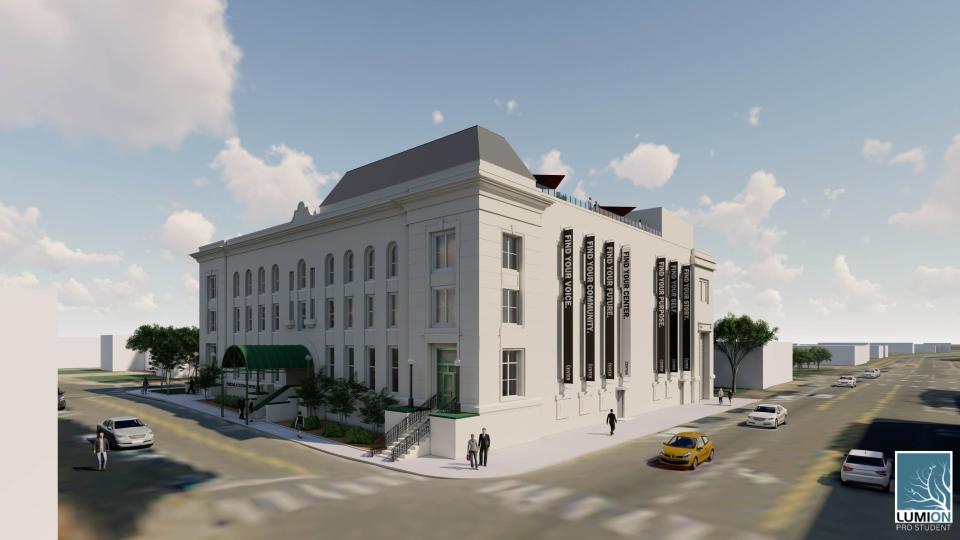
Clark Family Cultural Center forging a space everyone can call home
The renovation of the former courthouse was partly a product of a larger cultural shift.
Viola Dollard, former Pensacola Little Theatre Season President told the News Journal in 1971 that the arts were still being viewed as a place for the elite.
“They think that the Pensacola Little Theatre is not like going to the movies or playing golf. They think they have to dress to the teeth and only social leaders go,” Dollard wrote.
Dr. Donald Barberi, 1972 PLT season president, knew that a community’s theatre should attract a diverse crowd, where shows could enrich them with perspective beyond their own lived experiences.
“The community theatre should be a motivating force for all the people in Pensacola to become better educated about their own lives and the current changes in the world today,” Barberi said in a 1972 interview.
Pensacola Little Theatre was identified as the primary recipient of the state-of-the-art facility since it had been bouncing around hosting shows at different venues since 1936. When the building was first repurposed as a cultural center, the arts were still at the forefront, but for cultural organizations of all kinds were invited in to share in the space.
PLT grows theatre diversity:Pensacola Little Theatre ready to spread the acting bug to more diverse groups
Ballet Pensacola, which originated as Kaleidoscope Dance Theatre, the West Florida Literary Foundation, the African American Heritage Society and the Pensacola Children’s Chorus were among the first to call The Center their space. Even through renovations, about 20 nonprofits continually filled the building at any given time, according to Williams-Heath.
Restauranteurs like Norma Fleming Murray could be spotted selling her famous poppyseed bread and signature soups in the atrium where convicts once hung three floors above her. Ballet dancers could leap and prance through rehearsals freely throughout the three dance studios. The once sinister building exhaled new life.
But even back then, community members were still inching toward the idea that the building could become something greater for Pensacola, they just weren’t sure what that looked like.
For the theatre’s 51st anniversary celebration in 1987, the program noted that “the Theatre is currently undergoing growing pains as it attempts to reassert itself as a leader in cultural events in the community.”
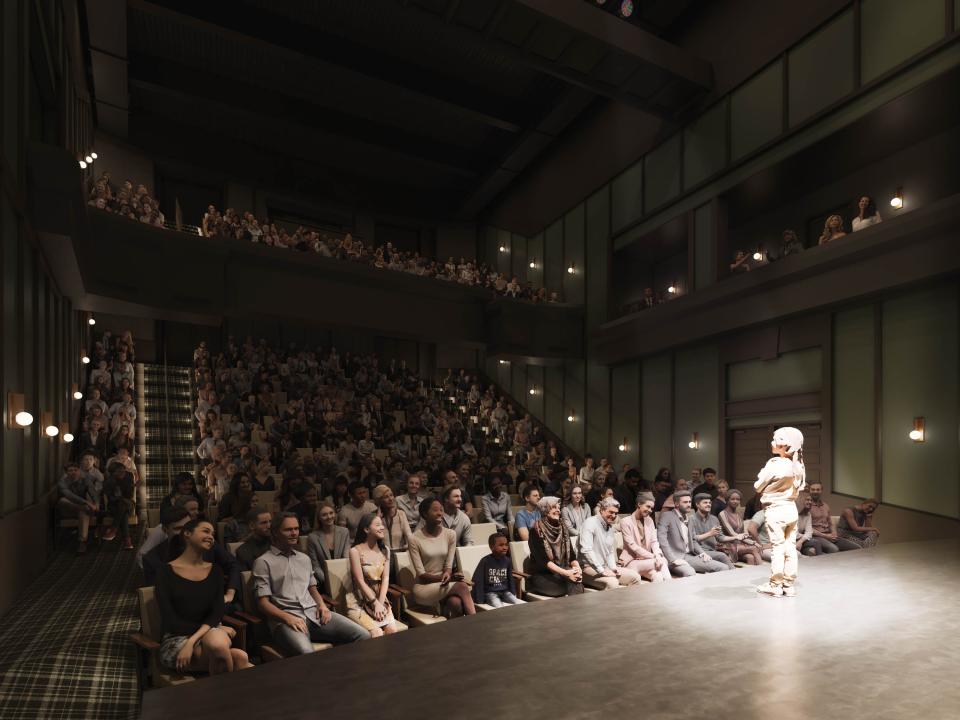
Today, The Center has finally evolved into what its predecessors always intended it to be, according to Williams-Heath.
Williams-Heath has used The Center to house church services, LBGTQ film festivals, EntreCon entrepreneurship conferences, the Emerald Coast Writers group and local improv comedy groups such as Improvable Cause among others.
It is a space where people of all walks are drawn to and have a purpose. Hence the new building’s nickname “The Center,” which encourages people to find their center, whatever that looks like for them.
“You belong at the Clark Family Cultural Center,” The Center’s website branding states.
“The Center becomes the community’s third place,” Williams-Heath said, a reference to a place other than the home or workplace for people to gather and interact.
“Whatever it is you’re looking for — whether finding your community, your voice, your passion, your purpose, your light, yourself — we hope you find it at The Center,” Williams-Heath said.
What “finding your Center” looks like
Laynie Gibson, board vice president of Stamped Film Festival, said the Center’s push toward creating a diverse place has been a long time coming and is a change that Pensacola is ready for.
The Pensacola Little Theatre committed to permanently housing the Stamped Festival, showcasing films with a focus on the LGBTQ community, since 2018. But the festival itself has been running over the past decade.
The LGBTQ community made its presence known in Pensacola in the mid-1990s when local officials and business owners spoke out against gay and lesbian visitors, and LGBT residents and visitors began stamping the cash they spent, lending to the name of the festival, according to the Stamped Film Festival website.
Events like the festival help provide opportunity for people to have lived experiences beyond their own, “building a stronger and more open Pensacola,” according to the Stamped website.
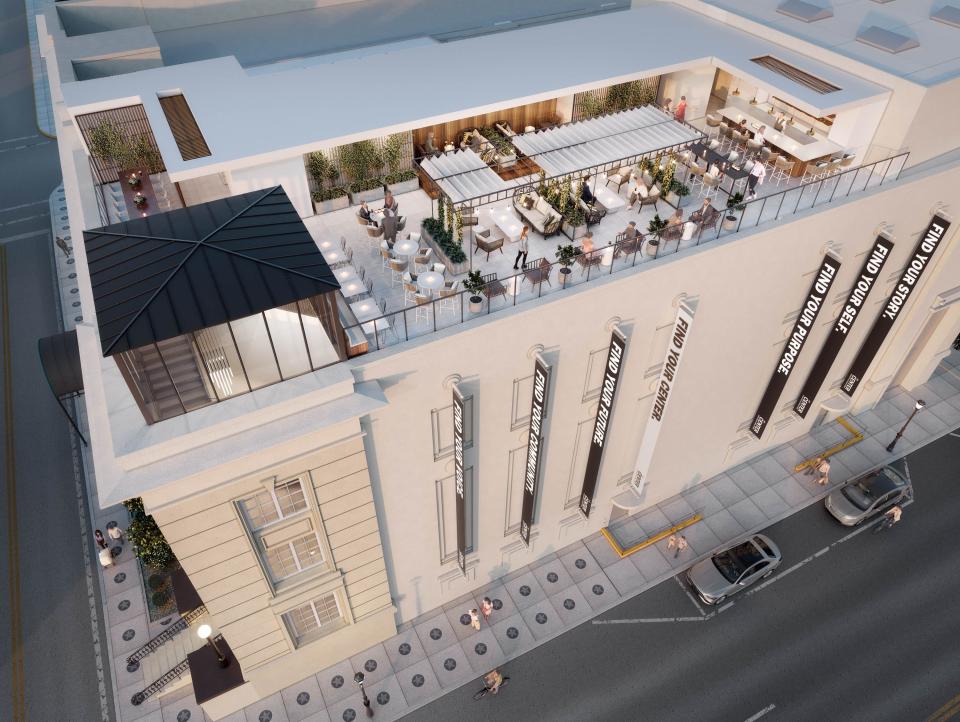
As a Pensacola resident for the past 12 years, Gibson has been able to see The Center evolve through the lens of an audience member, performer and board member. Hosting the festival there was a natural transition.
“Having a home for that just makes sense,” Gibson said.
Like Gibson, Anthony Broughton found The Center a place where he found his voice and confidence.
Broughton, the volunteer performer and member of PLT’s artistic committee, felt he was late in the game when auditioning for "Hairspray" at the Pensacola Little Theatre his 10th-grade year of high school. But little did he know, becoming a part of the ensemble would change his trajectory, as he would continue performing for another decade.
Even as his responsibilities and seniority increased, his respect from his peers was never contingent on that. He always had a place where he belonged.
“I always felt like I was heard and my opinions mattered,” Broughton said. “It has given me a lot of confidence to start auditioning professionally.”
PLT play tackles friendship and race :Can friendship survive a frank discussion about race? Pensacola play explores idea.
The Center, above all else, is about providing a “safe space” for expression, introspection and diverse points of view, according to Aurora Osborne, equal opportunity officer for the University of West Florida.
“We owe it to ourselves, our children, and our visitors to realize the full potential that The Center has to offer and to further develop the safe space and opportunities they provide to facilitate connection and community identity,” Osborne wrote in a statement.
Lusharon Wiley, the vice president of corporate culture at Innisfree Hotels, stated that the building has already proven its ability to bring diverse groups of people together, but the changes will aid in connecting even more people and telling more stories.
“This project will broaden its appeal as one of the places to go and underscore the importance of having vibrant gathering spaces within the community,” Wiley wrote in a statement.
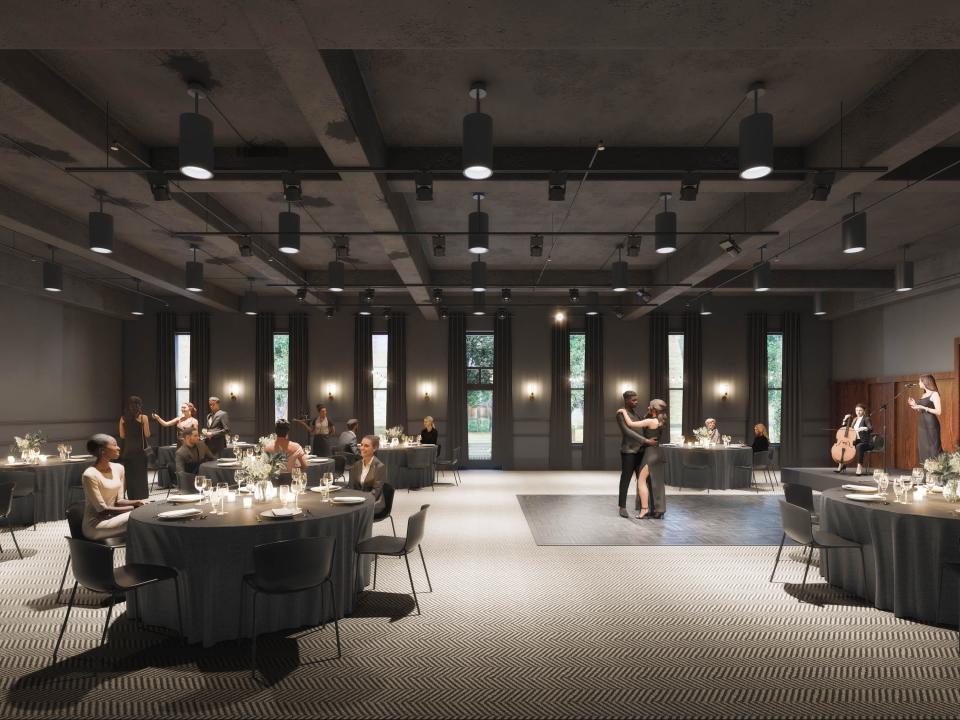
The Center has raised $2.4 million of its $3 million goal so far. Naming opportunities are still available for areas throughout the complex to carry The Center the remainder of the way.
Construction has begun inside of The Center, with a goal for fundraising to be completed for the rooftop area in 2024, according to Williams-Heath.
Mary Lou Cosby, one of the early pioneers, credited Herm Fischer and Lew Taylor with the early trailblazing, even though Taylor died only months before the curtain was drawn for the first time in 1996.
“(Taylor) is the man many people credit with the $3 million Pensacola Cultural Center project off the ground and keeping it going — whether that meant checking the financial records, mowing lawns, fixing toilets, organizing volunteers or hiring contractors,” wrote News Journal staff writer Mark Bradley in a Feb. 1996 issue.
“It’s sad that he (Taylor) could not live until Feb. 16,” Fischer added in an interview with Bradley. “He worked extremely hard.”
Still, she remembered the significance of the first play. Partially because it was opening day. The other part because her young son, who was performing in the play, carved his name into the stage with a nail so he would not forget his spot. The joy in the room was evident.
The dream that had been selling had come true, and is still coming true today.
“Everybody was very proud,” Cosby recalled. “The three who worked on it – it’s like watching your child grow up.”
More information and updates can be found on The Center website.
This article originally appeared on Pensacola News Journal: Pensacola Cultural Center launches $3M renovation again

